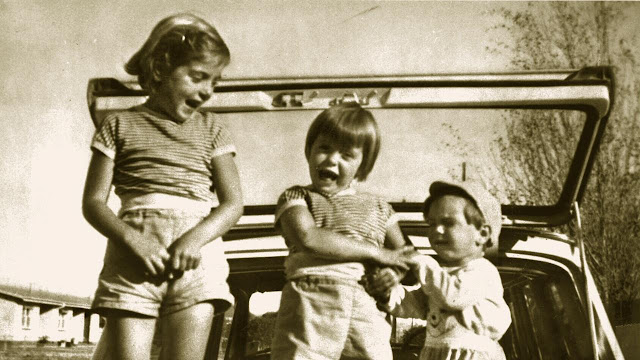The Unsolved Mystery of the Beaumont Children: Australia’s Enduring Cold Case
Introduction: A Nation’s Innocence Lost
On January 26, 1966—Australia Day—nine-year-old Jane Beaumont, her sister Arnna
(7), and brother Grant (4) boarded a bus to Glenelg Beach near Adelaide. They
never returned home. Their disappearance shattered Australia’s postwar sense of
security, transforming parenting norms and sparking one of the largest manhunts
in the country’s history. Nearly six decades later, the case remains unsolved,
a haunting enigma that continues to captivate and horrify.
Chapter 1: The Fateful Day—Australia Day 1966
The Beaumont siblings were seasoned beachgoers. Their
parents, Jim and Nancy Beaumont, trusted Jane to chaperone her siblings on the
short bus ride to Glenelg. That morning, the children left home with six
shillings and sixpence for bus fare and snacks. Witnesses later reported seeing
them laughing and playing with a tall, sun-tanned man in his 30s, described as
having fair hair and a thin face.
By noon, the children were overdue. Nancy grew anxious when
they missed the 2:00 PM bus. Jim, returning early from a work trip, scoured the
beach but found no trace. By nightfall, police launched a massive search,
draining marinas, scanning airports, and mobilizing volunteers. The only clues?
A bakery purchase made with a £1 note (far more than the children carried) and
a postman’s disputed sighting of them strolling together hours after they
vanished.
Chapter 2: The Suspect—A Predator in Plain Sight
The case’s most chilling detail is the unidentified man seen
interacting with the children. Witnesses described him as friendly and
authoritative, even asking a bystander if anyone had “stolen” the children’s
money. Arnna had once joked to her mother that Jane had “a boyfriend down the
beach,” a remark that took on sinister significance after their disappearance.
Police theorized the man had groomed the children over
multiple visits, earning their trust. The bakery transaction—Jane buying a meat
pie, which she’d never done before—suggested the stranger provided the extra
funds. Despite a nationwide alert and a composite sketch, the man vanished as
completely as the children.
Chapter 3: Psychics, Hoaxes, and False Hope
Desperation drove investigators to unorthodox methods. In
1966, Dutch psychic Gerard Croiset claimed the children were buried under a
Somerton Park warehouse. A public fundraiser demolished the site, but nothing
was found.
In 1968, the Beaumonts received letters purportedly from
Jane and her abductor, arranging a meeting. The letters—later exposed as a
teenage boy’s cruel hoax—crushed the family’s hopes. Decades later, forensic
advances identified the perpetrator, but he faced no charges due to the statute
of limitations.
Chapter 4: Key Suspects—From Von Einem to Harry Phipps
Over the years, multiple suspects emerged:
- Bevan
Spencer von Einem: A convicted child killer linked to the 1973
Adelaide Oval abductions. Witnesses noted his resemblance to the 1966
suspect sketch, but no evidence tied him to the Beaumonts.
- Harry
Phipps: A wealthy businessman accused by his son, Haydn, of burying
the children at his factory. Excavations in 2013 and 2018 found no
remains, but Phipps’ history of abuse kept him under scrutiny.
- Derek
Percy and James O’Neill: Notorious child murderers ruled out due to
alibis.
Chapter 5: The Legacy—A Nation Forever Changed
The Beaumont case marked a cultural shift. Parents stopped letting children roam freely, and “stranger danger” became a household term. For Jim and Nancy Beaumont, the trauma led to separation, though Nancy held hope until she died in 2019. Now in his 90s, Jim still lives in Adelaide, a silent figure in an enduring tragedy.




Comments
Post a Comment